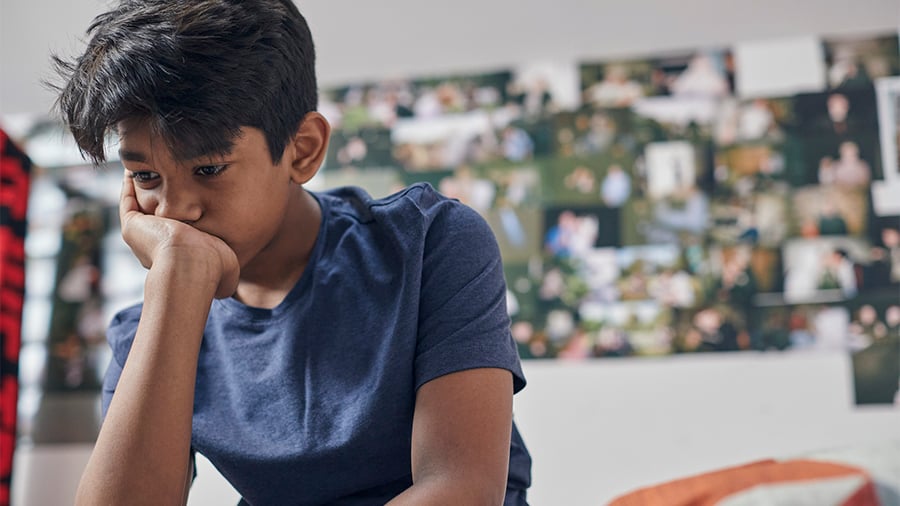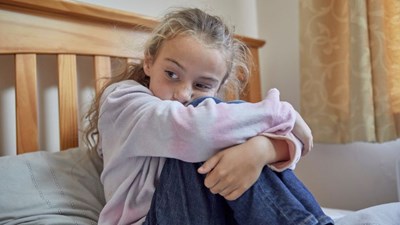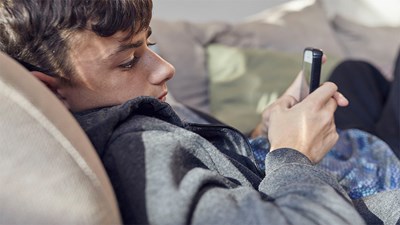We won’t stop until every child is safe online.
Together we can make sure it’s safe for every child to go online. We’re here to support parents with online safety advice, and we’re here for children – to protect them and help them recover from abuse.
Help us protect children online
Online safety advice
Understanding online safety is tricky for all ages. We have advice to help you learn about staying safe online as a family.
TRUST toolkit for your child's first phone

If your child is about to get their first phone or a new device, then it’s a great idea to plan ahead for how they will use it safely.
We have partnered with Vodafone to create a toolkit of activities to help you feel confident about starting this journey together as a family.
We're working for a safer internet for children
Whether we're campaigning or counselling, we're fighting to protect children from online abuse and helping them recover if they've experienced it.
Get all the latest online safety advice, tips and campaign news
Sign up to our newsletter to get online safety news and advice straight to your inbox

Campaigning for change
We fight to change laws to make society safer for children. Thanks to 147,635 incredible people who took action, we did it! Our voices were heard.
We now have an Online Safety Act that children and young people can be proud of. The Act will place a legal duty of care on tech companies to protect young people on their platforms.

Supporting children
We’re ready to listen, reassure, and take action to keep children safe online. Our services support families – to stop abuse from happening and help them recover if it does:
- Report Remove on Childline helps young people report sexual images of themselves to get them removed.
- Our In Ctrl programme for children and young people helps prevent online sexual abuse through group work and one-to-one support sessions.
Empowering parents
Our online safety hub offers advice for parents, from nudes to online games to parental controls. Our guides help you make informed decisions and help keep your child safe.
We also have resources for children and young people on Childline. Our courses, guides and events support professionals like teachers, counsellors, and educators with keeping children safe online.
Inappropriate and sexual behaviour online
Sometimes your child might see content online that's upsetting, like violent or pornographic content. We have advice to help.
Worried about something online?
It's hard to navigate online risks as a parent or carer. You’re not alone. We're here to help.
Need to talk to someone?
Call us on 0808 800 5000, email [email protected] or fill in our online form to get advice and support from safeguarding experts.
Online safety guides for parents
The online world changes so quickly it's hard to keep up. Our online safety guides help you navigate online risks – whether your kids are gaming, chatting, posting or streaming.
Get all the latest online safety advice, tips and campaign news
Online safety and safeguarding resources for professionals

If you work with children or in safeguarding, our NSPCC Learning site has tailored resources to help you keep children safe online.
We have advice, guides, draft policy statements, elearning courses and more to help you manage online risks.
See our content on preventing online abuse and harm and responding to online abuse.
We also offer free online safety workshops for schools and organisations working with parents and carers.
See our online safety resources
Take our online safety training course
Our highly-rated interactive elearning course on online safety will teach you about how children and young people use existing technology, the risks involved and how to protect them from harmful content online in your context.
Need to talk to someone?
Call us on 0808 800 5000, email [email protected] or fill in our online form to get advice and support from safeguarding experts.
Online safety resources for children

Our Childline website has support and advice about online and mobile safety, like:
- how to stay safe online
- privacy settings and how to set them up
- how to feel good on social media
- online grooming and what to do if you’re worried
- advice about sexting, porn, gaming and more.
We also have tools and resources for children and young people:
- Report Remove
The Report Remove tool helps young people report and remove nude images or content shared online. - Coping Kit
The Coping Kit has offline activity ideas to help children and young people cope with feeling low or bored.
Get support from Childline
If you’re 19 or younger you can get confidential support from Childline counsellors about anything that worries you. We’re here to help 365 days a year. Call, email or chat with our counsellors online.
Online safety resources for children with SEND

We've partnered with Ambitious about Autism to create online safety tips, advice and activities for parents and carers of children with SEND, including children with dyslexia, autism and speech and language difficulties.
We must end online abuse

1 in 3 young people have seen something worrying or nasty online.1

Just under half of young people have been exposed to online pornography.2

In 2020/21 there were over 2,500 Childline counselling sessions about online bullying.3

In 2020, the Internet Watch Foundation confirmed over 153,000 reports made contained child sexual abuse images.4
You can help us to support more families.
Help us protect children online
References
-
In 2020/21 there were a total of 2,508 counselling sessions with young people worried about bullying online.
-
Internet Watch Foundation (IWF) (2021) The annual report 2020. Cambridge: IWF In 2020, the Internet Watch Foundation (IWF) confirmed 153,383 reports as containing child sexual abuse imagery or UK hosted non-photographic child sexual abuse imagery. This was a 16% increase from 2019.
-
Martellozzo, E., Monaghan, A., Adler, J.R., Davidson, J., Leyva, R. and Horvath, M.A.H. (2016) I wasn’t sure it was normal to watch it. London: NSPCC An online survey with 1,001 girls and boys aged 11-16 across the United Kingdom found that 476 young people (48%) had seen online pornography, whilst 525 (52%) reported not seeing online pornography. Children and young people were most likely to have first been exposed to pornography inadvertently (e.g. via pop-ups or shown by someone else unexpectedly)
-
Ofcom (2021) Children and parents: media use and attitudes report 2020. London: Ofcom. In 2020, 31% of surveyed 12- to 15-year-olds said they had seen something online that they found worrying or nasty in some way that they didn’t like.

























